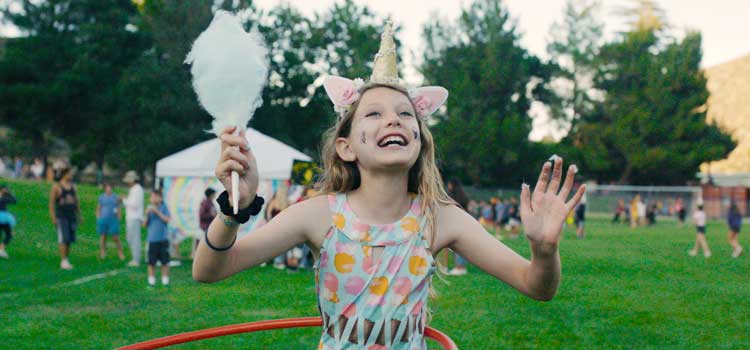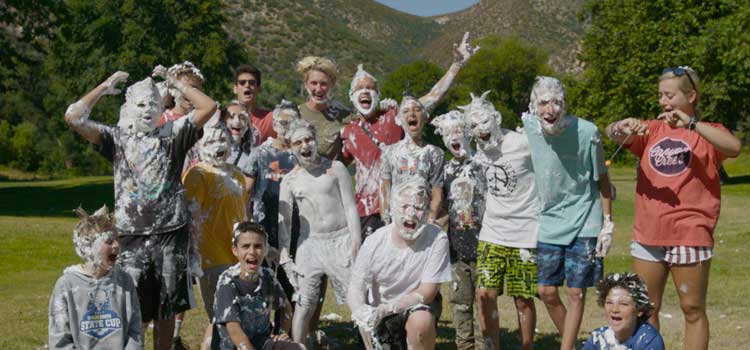The skills you need to take great summer camp videos are well within reach. You don’t need to be a professional videographer, and you don’t need to invest thousands of dollars in expensive equipment. If you understand why camp is so special, and know the emotions you want to convey with your videos, you’re halfway there.

To help you translate this knowledge into great summer camp videos, we sat down with Ranald Lloyd-Williams and Hannah Harper from Feel Good Films. Feel Good Films is a full-service production company that has been helping camps tell their stories since 2014, with a team that understands the camp world because they are from the camp world. Feel Good Films’ focus is purpose-driven organizations with an emphasis on camps, which makes Ranald and Hannah uniquely positioned to offer advice.
Using a professional film company that knows the camp world inside can be very effective, but if you’re planning on filming on your own, here are their tips to take great summer camp videos.
1. The correct equipment is key
Fancy equipment isn’t necessary, but the right equipment is. Ranald and Hannah suggest you invest in versatile equipment as a starting place and make sure that the camera you invest in is “kid-proof.” Basically, get something durable that can withstand everything camp will throw at it to take great summer camp videos. Their favorite camera recommendation is DJI Osmo camera and accessories because when used correctly it is waterproof and incredibly durable.
2. Be strategic and plan ahead to take great summer camp videos
Don’t just hope that your photographer or specialist is in the right place at the right time. When making your filming schedule, think about what makes your camp unique, and which activities and events can best convey your camp culture. In doing this, chances are it will be a mixed bag of actions you want to capture. Once you identify these activities, Ranald and Hannah suggest you make sure the person with the camera is planning to be there to film the magic. Of course, there will be spontaneous moments that add to your video library, but you don’t want to miss a key activity if you can avoid it. As you do this, also make sure you interview a variety of people, including campers, counselors, directors, and specialists—the more perspectives you have, the better off you’ll be.
Fancy equipment isn’t necessary, but the right equipment is. Ranald and Hannah suggest you invest in versatile equipment as a starting place and make sure that the camera you invest in is “kid-proof.” Basically, get something durable that can withstand everything camp will throw at it to take great summer camp videos.
3. Consider different audiences
Remember that what is appealing to prospective campers may not be the same thing as what appeals to potential staff. Ranald and Hannah point out that every video you make doesn’t have to have the same purpose or audience, but the process of capturing footage must take all of the audiences into consideration. For example, talk to staff and directors about safety and emotional wellness (things that would appeal to parents), capture footage that shows campers enjoying watersports and activities unique to your camp (this appeals to campers), but make sure to show the significant, lasting friendships that staff members can make. Parents, campers, and staff are choosing to spend their summer with you and they should see themselves in the videos you share. But of course, Ranald and Hannah emphasize, make sure the story you tell is accurate.
4. Balance the places and activities with the emotional experience of the campers

By this, Ranald and Hannah mean that as important as it is to capture the individual emotion and experience of campers (their sense of joy, adventure, and independence), not everyone viewing these videos has seen the camp. Including the places and activities gives the viewer context and perspective and helps you create great summer camp videos. It also builds a great connection for returning campers to see a place that they feel connected to. It is definitely important to focus on your campers in videos, but you need more background in order to help your audiences fully grasp the experience.
5. Make well-rounded videos
One example of a well-rounded and great summer camp video, according to Ranald and Hannah, is a weekly video recap. These should include more than just one activity, and generally, the Feel Good Films crew likes to create videos that show a mixed and balanced camp experience. Those videos, they say, tend to have something for everyone.
6. Focus on small moments
The excitement generated from all-camp activities is irreplaceable, but Ranald and Hannah point out that even things like a rest hour can be sources of inspiring video. When campers sit together outside and have free time is when some of the best memories are made. Camp is ultimately about the atmosphere that you create, and the friendships that are made. There’s a simplicity in those small moments that can translate really well into video formats.
Including the places and activities gives the viewer context and perspective and helps you create great summer camp videos. It also builds a great connection for returning campers to see a place that they feel connected to.
7. Lighting is important
You need a clear subject to who you can identify. Ranald and Hannah stress that you don’t want your footage to be hard to parse because your audiences need to see the reactions and expressions of campers and counselors. Additionally, if you are planning on shooting at night be wary of grainy footage without proper lighting equipment. One tip is to be thoughtful about what activities you are highlighting. While it would be incredible to capture every single detail and moment of camp it is important to decide what you want to emphasize, if that happens to be a moment in the dark—possibly at a campfire—plan ahead. Scout out what light you have that is naturally occurring, i.e. twinkle lights, campfire lights, building lights, etc., and test it out beforehand. If you don’t like the image you are seeing but feel that that moment is a must-have, investing in proper lighting equipment is your best course of action. You want the images you capture and produce to be high quality, so invest where it matters.
8. Consider perception

You want to make sure that your footage not only appeals to a range of audiences but also that it checks important boxes. Video can be a great way to market your camp if you must remember that the viewer cannot always see the full picture. Make sure you are aware of how the footage looks without proper context because everything you depict needs to look as physically and emotionally safe. For example, let’s say you have captured a video of campers who are performing (lip-sync, talent show, play, etc.) and they look like they are crying. If all the footage is close-ups on campers’ faces looking like they are crying, that sends the wrong message. Instead, make sure to show the audience, the stereo equipment, and the banner, so the event is perceived as it happened. Don’t leave room for interpretation.
9. Less is more!
In a lot of cases when camps don’t hire a professional team, they film and film and film to make sure they have a lot of footage to choose from. Ranald and Hannah point out that this can backfire because it’s too much to get through. Instead, focus on a range of activities and limit your time actually filming. If you want to film every day of the summer, schedule out how much time you are planning on dedicating to various activities and leave a buffer for any important ad hoc footage. Quality over quantity is the right approach to creating great summer camp videos.
Sitting in the Director’s Chair
You may not have one of those fancy clapboards or a team of editors and producers, but that’s ok. What positions you to effectively create great summer camp videos is the same thing that has made Feel Good Films successful: you know camp. Start there, utilize these tips, and trust your story-telling instinct. If you’re looking for professional support, you can reach the Feel Good Films crew here.
